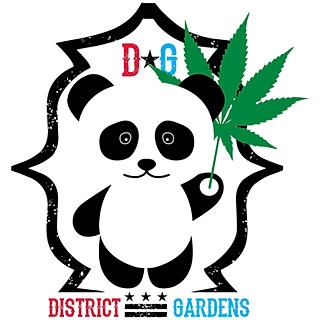How I Think Cannabis Brands Should Approach Mood-Altering Products
- District Gardens Team
- Aug 5, 2021
- 4 min read
There is an enormous opportunity in the cannabis industry for products that satisfy both daily and occasional needs.
Opinions expressed are solely those of the author and do not reflect the views of District Gardens DC editors or publishers.

I’d like to paint a picture of what a typical day in the year 2030 could look like: It’s 6:30 a.m. and you are awakened by a bedside diffuser that dispenses an aromatic and invigorating blend of cannabinoid and terpene-infused oil into the air. In the kitchen, the coffee machine dispenses your custom brew — a shot of espresso, CBD and cannabigerol, which has an optimal amount of caffeine and the right cannabinoids to take the jittery caffeine edge off.
Then, you dive into your workday. When you hit the post-lunch lull, you drink a THCV-, terpene- and adaptogen-infused soda to give you focus and a little bit of energy. By 5 p.m., you need a full unwind moment, and you have a low-dose THC seltzer on your patio before dinner with friends. Before going to bed, your bedside diffuser dispenses a blend of cannabis oil and lavender that helps gently ease you to sleep.
Defining ‘Mood Management’
There is an enormous opportunity in the cannabis industry for products that satisfy both daily and occasional needs. This isn’t just cannabis and the “traditional” cannabis products we are familiar with. It’s the entire ecosystem and the normalization of the use of cannabis products — from cannabis-infused beverages to THC vapes to stress-relieving skincare with calming cannabinoid properties. It’s both “intoxicating” cannabinoids (like Delta 9 and Delta 8 THC) and the myriad of “non-intoxicating” ones (e.g., CBD, CBG, CBC, and CBN), as well as the terpenes found in the cannabis plant (i.e., linalool, limonene, and myrcene).
Complementing the what is the how — specifically, how much to take to elicit a specific effect. The dosing and microdosing of these cannabinoids will likely be the foundational elements of mood management — small doses of products, whether with or without psychoactive properties, that can slightly deviate you from your baseline in different directions over the course of a day.
For the psychedelic side of our industry, microdosing is not a new concept. A 2018 article from New York magazine’s “The Cut” revealed the cult phenomenon of microdosing psychedelics within the creative industry, not to escape everyday life but to enhance it. I believe what makes the mood management concept an industry disruptor is the introduction of non-psychedelics for mood control. Ultimately, this approach could provide people with dosing variations (from micro to standard to macro), within a range of formulations (i.e., intoxicating and non-intoxicating, cannabinoids, terpenes and adaptogens), which would enable users to choose dosing based on a current or predicted need state.
In-Roads and Road Blocks
For the category to move toward normalization, we must introduce dosing standards and usage guidelines to the end consumer. The cannabis industry is already closing the gap on a mood-managed future across product formats and categories. For instance, innovations in vape technology can allow for the fast delivery of the calming effects of CBD, while beverages and edibles can be used to elicit longer-lasting mood effects.
Right now, however, these are packaged as a singular use case per product, for instance, ingesting a CBD gummy to relax. What the industry will eventually need to offer to consumers is personalization and planning related to control beyond a single need state at a particular point within their day — something along the lines of a suite of product formats and cannabinoid formulations in varying doses to enable total mood management. As industry leaders, this is an innovative goal we should be moving toward, with an emphasis on dosing standards and regulations.
The technology has already largely arrived, but the missing links are the extended cannabis product formats, research on what effects cannabinoid combinations can elicit, and standard dosing guidelines to give consumers more control of their health, wellness and ultimately mood choices. By establishing safe standards, consumers will have the ability to find one’s unique dose that could result in tailored, accurate effects. Safety and standards are the next steps — and arguably the most important measures we should be taking — to ensure the future of true mood management.
As exciting as this mood-managed future is, the reality is we are hindered by slow-to-change regulations and standardization of product quality, consumption and dosing, all of which would increase consumer confidence and broaden consumer targets to make cannabis products more approachable.
Pushing forward this clarity around standardization is a key component of our innovation focus — for the industry at large. Thankfully, through advocacy efforts, ongoing regulatory changes, and growing societal acceptance and awareness of the potential of cannabis, the tide is changing for consumer awareness, education and interest. And while this evolution takes place, we are continuing to bring forth a future in which consumers’ lives are improved and every day is made better by cannabis.
Click here to Read Full Article





Comments